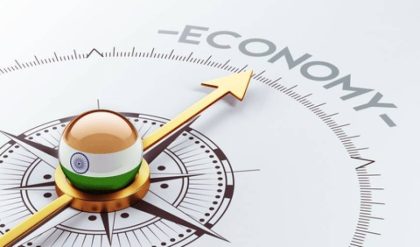· After independence, one of the most difficult choices that the leaders had to make was to decide the type of economic system that was capable enough to promote welfare equally across the country.
· Among different types of economic system, Pandit Jawaharlal Nehru, the first Prime Minister of India, suggested Socialist Economy; however, it was not the same that was practiced in the USSR.
· After great efforts, the planning committee decided to adopt a mixed economic system − a judicious mix of both socialist and capitalist systems.
· Mixed economy was finally chosen with the help of Industrial Policy Resolution of 1948 and Directive Principle of Indian Constitution.
· Planning Commission was set up in 1950, and the Prime Minister of India was made the chairperson of the commission.
Five-year Plans
· The First Five-Year Plan was one of the most important as it paved for the development of the country then and for the years to come.
· Five-Year Plans are formulated very systematically in which all the problems are considered and addressed on priority basis. For example, agriculture development wasthe most important after independence, hence, the first five-year plan was drafted to strategically propel its growth and development.
Goals of Five-year Plan
Any plan should have a specific goal to fulfil. The goals of the Five-Year Plans are mentioned in the following image −

Growth
· This goal was directed towards an increase in Gross Domestic Product (GDP) of the country. The different sectors of the economy — the agricultural sector, the service sector, and the industrial sector are considered when a country’s GDP is derived.
Modernization
· For the swift growth and also to increase the productivity, modernization was necessary; hence, new agricultural technology (use of machinery and hybrid seed varieties) as well as advanced machinery for factories were used.
· Apart from the modern technology, social status of women was also considered and they were granted equal rights.
Self-Reliance
· To develop all the sectors and make India a self-reliant country, only indigenous resources and technology were promoted during the first seven five-year plans.
· Another purpose of self-reliance was − India did not want to depend on any other country for food and important technologies, as it could be a threat to country’s sovereignty as well.
Equity
The above mentioned goals would not be fruitful or lead to the betterment of the people unless there is equality.
To ensure equity, the following steps have been taken −
· Implementation of the Land Reforms Act was a turning point under which, the government abolished the existing ‘Zamindari’ system and the tillers (farmers) were made the owners of the respective land.
· Land Ceiling was another commendable act under which the maximum size of land plots an individual can own was fixed.
· The purpose of land ceiling was to prevent the concentration of land ownership in the hands of few people.
· There were some loopholes in the land ceiling law and the implementation methods were also poor; therefore, the land ceiling was not as successful as it should have been. Only Kerala and West Bengal adopted this policy with full commitment.
· The Green Revolution marked a significant change in the field of agriculture in India. It promoted the use of High Yielding Variety (HYV) seeds. This further increased the yield of wheat and rice.
· Primarily, the use of HYV seeds was limited to a few states — Punjab, Andhra Pradesh, and Tamil Nadu, but after the late 1970s, many other states also started benefitting from the use of HYV seeds and improved the agricultural production on their fields.
· Use of HYV seeds benefited farmers in the form of market surplus, i.e., farmers were now producing sufficient grains that could also be sold into the market.






Comments are closed.